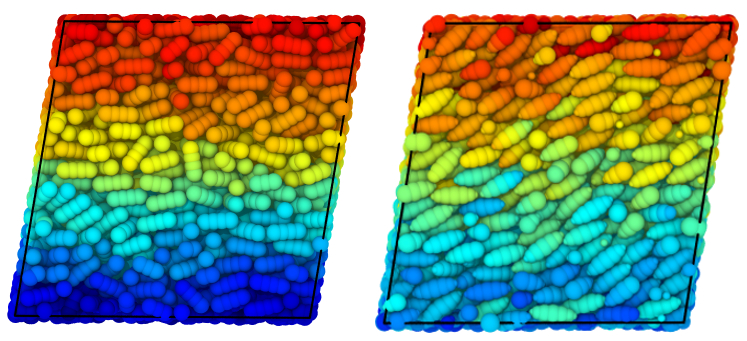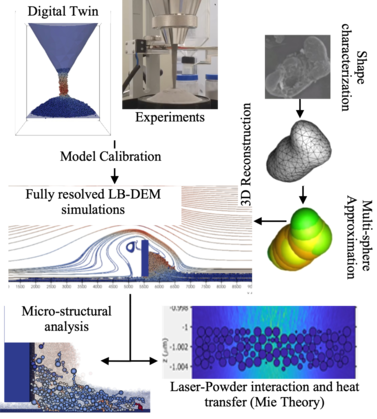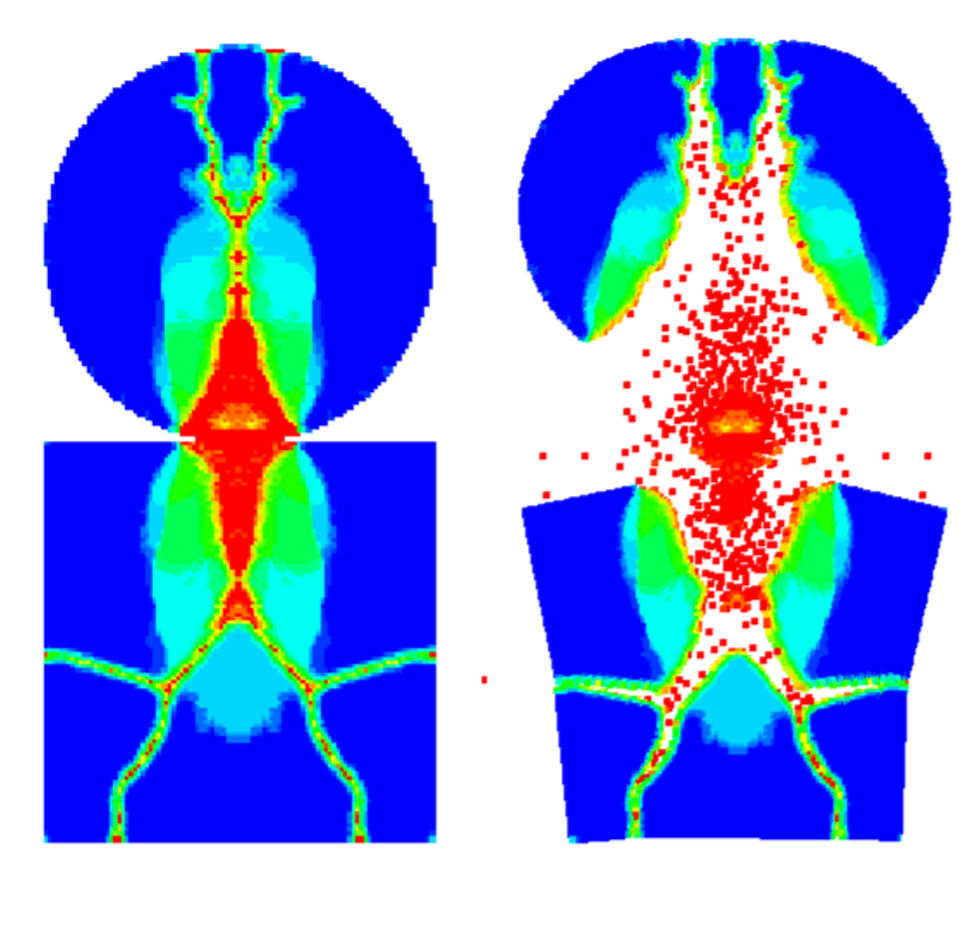The critical importance of understanding the flow of granular materials in countless natural and industrial processes, has resulted in significant interdisciplinary research efforts for several decades. Of such efforts, one of the most significant contributions to the understanding of dry granular flows was the discovery of a relationship referred to as the
rheology. This phenomenological model relates the internal friction coefficient (i.e. the shear stress to confining pressure ratio
), to the dimensionless inertial number
which quantifies how rapid the material is flowing locally. Despite the many successful applications of the
rheology, it loses accuracy for several key aspects of dry granular flows including application to dilute cases, accounting for particles with a finite stiffness (or soft particles), nonlocal and grain shape effects which have been highlighted as causing significant deviations from classical
models. Elucidated from advances in non-local rheological models, is the roll of the particle velocity fluctuations often described as granular temperature,
. Acknowledgement of the granular temperature for constitutive modelling efforts has now led to several recent remarkable proposals, mitigating many of the weaknesses of the traditional
models.
In this work through Discrete Element Method (DEM) simulations we are working on the development of new constitutive models based on the kinetic energy to address the shortcomings of the classical
rheology.
This work is being conducted by Nathan.


